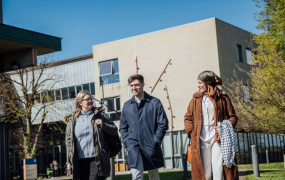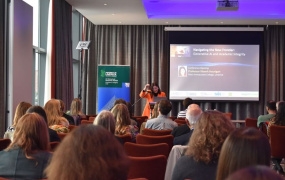Facilitating Virtual Classes
What are virtual classes?
Virtual classes or webinars are lectures that are delivered using technology; it allows the lecturer to deliver learning material to students that may not be on campus e.g. work based learners, part time learners and international students. They can also be used to invite guest lectures and facilitate student meetings. Virtual classes replicate a physical class in that the student can hear the lecturer and view their slides. Often these virtual classes can be recorded so students can revisit the material at a later date for revision. However, in addition to delivery, virtual classrooms can be used to provide interactive classes.
Delivering virtual classes
Virtual classes are mainly used to deliver course lecture notes to students. However, the technology can be used in many different ways.
- Virtual classrooms often have polling functionality in which you can ask learners to respond to a multiple-choice question. This provides an opportunity to engage and involve learners in the class and may provide a basis for discussion.
- You can allow a student to become a presenter, this is ideal for class presentations. It is also possible to enable a student’s audio so they can ask questions and contribute to class discussions.
- Whiteboard functionality allows you to record points made in a discussion and make these visible to students. You can also share the whiteboard with students so they can contribute to brainstorming activities.
- Online chat facilities allow students to ask a question or converse with the class and tutor, this can be done privately my only messaging the lecturer or publicly where a message is sent to the class.
Virtual Classroom applications
There are a number of technologies that can be used to facilitate virtual classes. Some of these are:
- Video conferencing software - BigBlueButton (integrated with Moodle) and MS Teams Meetings
- Virtual reality applications - Second Life allows you to create a virtual world to deliver classes and interacting with students
If you would like to avail of these technologies in your teaching, please contact the LEAD team.
Further reading
- Gedera, D., 2014. Students’ experiences of learning in a virtual classroom: An Activity Theory perspective. International Journal of Education and Development using ICT, 10(4).
- Martin, F. and Parker, M.A., 2014. Use of synchronous virtual classrooms: Why, who, and how. MERLOT Journal of Online Learning and Teaching, 10(2), pp.192-210.







